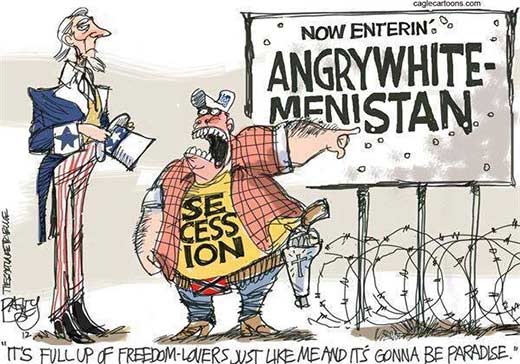
The presidency of Donald Trump has reached a new crisis, adding to a continuous chain of crises that have over shadowed the eight months he has spent in the White House. The events in Charlottesville, Virginia, last Saturday, which saw violent confrontations and claimed the life of a paralegal, an activist with the anti-racism movement, has left Trump in a predicament, facing a storm of criticism and accusations (sometimes veiled and other times explicit) that he is secretly sympathizing with the racist far right, and that his positions and policies encourage and energize that movement.
The crisis exploded with Trump’s tweets, as is customary for the majority of crises his administration has known, when he commented on the events in Charlottesville, speaking generally and avoiding any reference to the racist right-wing groups that caused the provocative demonstrations, and who are considered to be responsible for the violence that followed.
Things got worse when Trump responded to criticism by equivocating the two sides – the racists and the anti-racists – implying they were equally responsible for the violence. The issue then snowballed, and the administration found itself surrounded by criticism from politicians, activists, and normal people resisting the neo-Nazis, white supremacists, Ku Klux Klan and their history stained with bloody racism.
Criticism of this kind is not on the same level as other criticism. Racism is still a particularly sensitive issue in America for well-known historical reasons, and the country has not totally freed itself of the problem. A majority of blacks still complain about continued marginalization, social and economic division and a lack of political action despite all the progress made in combating racism.
The Charlottesville tragedy as a whole reflects the continuing struggle with a legacy of racism and its effects. The champions of the racist far-right, including the neo-Nazis, Ku Klux Klan and white supremacists, who swept through this city with their racist signs and slogans, some of whom were wearing military uniforms girded with automatic weapons, wanted to demonstrate and protest the city council’s decision to remove a statue of Robert E. Lee, one of the leaders and heroes of the Confederacy that fought in the Civil War against the prohibition of slavery.
Some 150 years after that war, there are still many Confederate statues throughout a number of American towns and cities, which stir controversy and produce tension among those who want to keep the statues up and those asking for their removal, the latter being those who regard the monuments as “glorifying the disgrace” and symbolizing the time of slavery in America, all of which upset black citizens and all anti-racists.
So, when Trump failed in his first tweets to condemn the racist far-right and the violence perpetrated by one of their followers, a man in his 20s, James Alex Fields, who ran over anti-racist demonstrators with his car, causing the death of paralegal Heather Heyer, 32, and injuring 19, of course he was setting himself up for criticism from all over, and put himself at odds with most of the media. As the crisis unfolded, and the administration found itself surrounded by criticism, the president’s advisers pressured him to state his unequivocal condemnation of the racist far-right groups that participated in the demonstration and contributed to the violence. The advisers prepared a written statement so that Trump wouldn’t stray from the message, and Trump read that statement to journalists last Monday.
But by Tuesday, Trump had returned to his first position and unleashed a tirade directed toward the media, equally condemning the neo-Nazis and white supremacists alongside the anti-racists, whom he described as radical leftists, saying that they are also responsible for the violence. At the same time, he did not call the killing of the paralegal an act of terror, telling journalists instead, “you can call it terrorism, you can call it murder, you can call it whatever you want.”
Many suppose that Trump’s position in this crisis is rooted in the fact that the racist far-right movements strongly supported him in his election campaign, but his popularity continues to recede, and he feels that his administration is besieged. Trump does not want to lose his base, whether it’s the radical right, or more generally “angry white men,” who guaranteed his victory in the Rust Belt, a region that suffers from deteriorating industry and widespread unemployment. These people were drawn to the slogan “America First,” and the idea of building a wall on the Mexican border, and banning Muslims. Studies show that, among those who voted in the presidential election, 71 percent of white men without a college degree voted for Trump.
Not all “angry white men” are necessarily racist, but everyone supporting neo-Nazi groups or the Ku Klux Klan essentially belongs in the category of “angry whites.” Trump still cannot neglect this voting bloc, so he remains a prisoner of the extreme slogans he employed to attract them to his side, those same slogans that the racist far-right are feeding on, with all that means for his presidency and everything it is doing to America.

Leave a Reply
You must be logged in to post a comment.